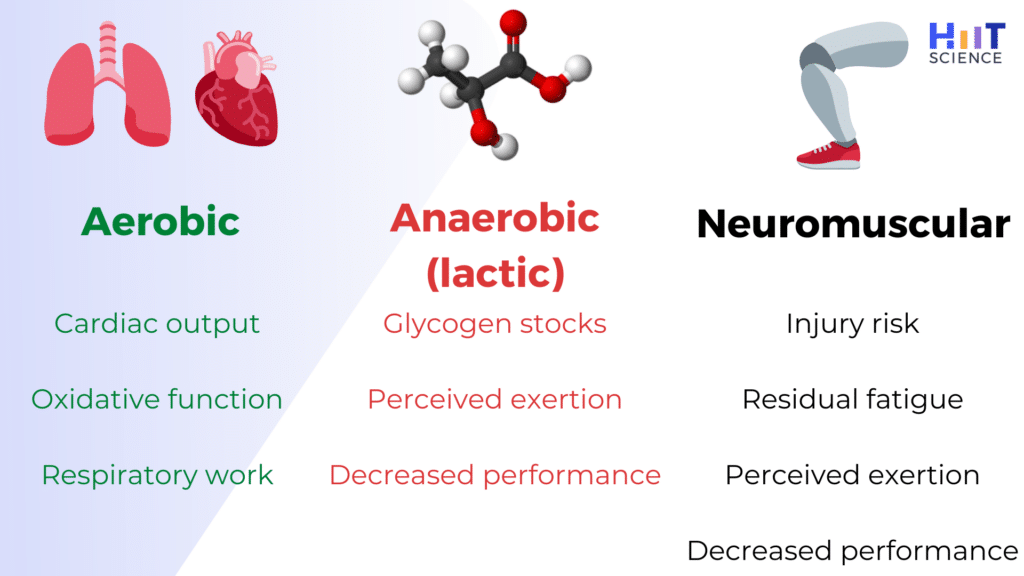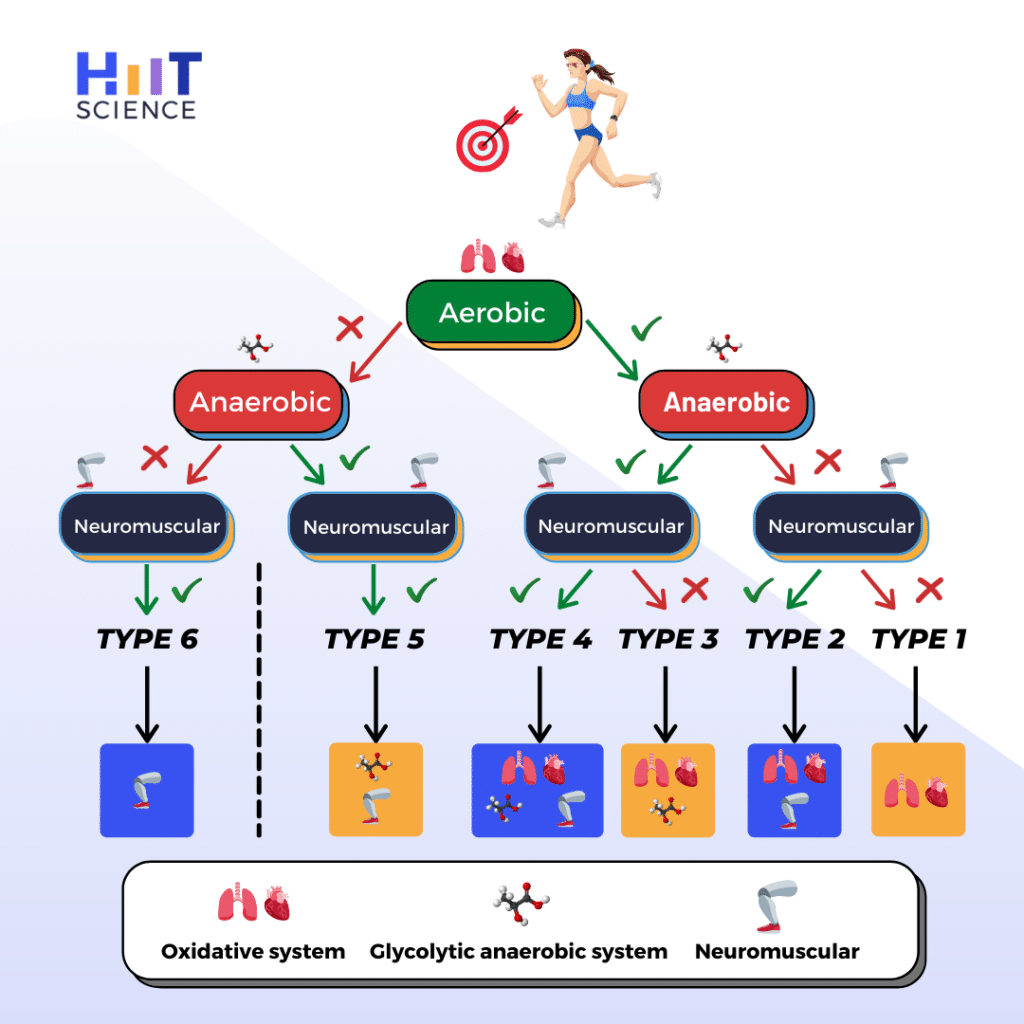Introduction
As you may know, one of the key concepts HIIT Science developed over the last 3 years is the HIIT Types. This was Martin’s brainchild from the team’s two part review written in 2013, and Paul wrote a simple blog titled ‘why the HIIT Types’ that more recently outlines its importance. To summarise the concept, understanding the key physiological responses of different HIIT sessions enables you the ability to place the right session, in the right place, at the right time, in order to maximize the development of the physiological capacities you’re after. When you do a HIIT session, you can target 3 key physiological targets (Figure 1 ).

Logically, you end up with six different types of HIIT sessions (Figure 2) as shown in our most popular figure 2 below. While we put a lot of emphasis on the first 5 HIIT types, we thought it was time to shed some light on the last piece of the puzzle: the HIIT Type 6.

HIIT Type 6: the missing piece of the puzzle
So what is the HIIT Type 6 target? According to our own definition, a HIIT Type 6 target is essentially a large neuromuscular strain, with limited metabolic contribution (neither oxidative nor anaerobic) (Laursen and Buchheit, 2018). This would encompany any form of training aimed at developing strength, speed and power (Figure 3).

In our book, we mainly focused on the first 5 HIIT types as these are the classic HIIT formats. We also consider the potential interferences between strength and endurance training with the excellent Jackson Fyfe. However, we have never, until now, focused on this critical aspect of performance, which is about developing your neuromuscular system to get stronger, faster and more powerful. This is quite paradoxical as everyone wants in some way to be better at one of those. For any race or key moment in sport, it is always a question of being quicker than someone else, isn’t it? Even when we look at the evidence side of things, research highlights that sprinting actions, for example, are the most common moments preceding a goal (Faude et al., 2012) or that exposure to top speed running could help to prevent soft-tissue injuries (Duhig et al., 2016, Buchheit, 2019). With this in mind, we reached out to one of the best specialists of speed training in the business: Dr Joseph Coyne.

Interested? Use the sign-up to the form below and be first to know when the course is available and benefit from an exclusive discount code!





